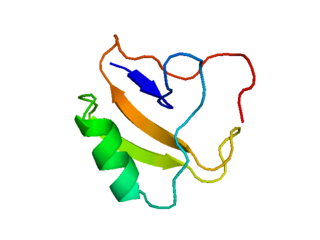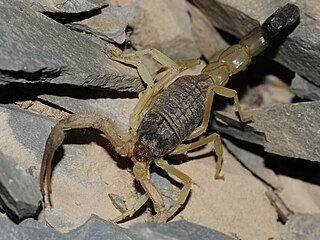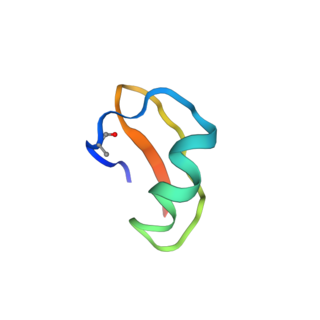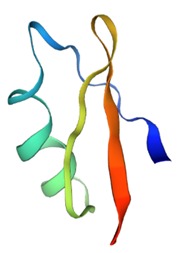
The Buthidae are the largest family of scorpions, containing about 100 genera and 1339 species as of 2022. A few very large genera are known, but a high number of species-poor or monotypic ones also exist. New taxa are being described at a rate of several new species per year. They have a [cosmopolitan] distribution throughout tropical and subtropical environments worldwide. Together with four other families, the Buthidae make up the superfamily Buthoidea. The family was established by Carl Ludwig Koch in 1837.

Scorpion toxins are proteins found in the venom of scorpions. Their toxic effect may be mammal- or insect-specific and acts by binding with varying degrees of specificity to members of the Voltage-gated ion channel superfamily; specifically, voltage-gated sodium channels, voltage-gated potassium channels, and Transient Receptor Potential (TRP) channels. The result of this action is to activate or inhibit the action of these channels in the nervous and cardiac organ systems. For instance, α-scorpion toxins MeuNaTxα-12 and MeuNaTxα-13 from Mesobuthus eupeus are neurotoxins that target voltage-gated Na+ channels (Navs), inhibiting fast inactivation. In vivo assays of MeuNaTxα-12 and MeuNaTxα-13 effects on mammalian and insect Navs show differential potency. These recombinants exhibit their preferential affinity for mammalian and insect Na+ channels at the α-like toxins' active site, site 3, in order to inactivate the cell membrane depolarization faster[6]. The varying sensitivity of different Navs to MeuNaTxα-12 and MeuNaTxα-13 may be dependent on the substitution of a conserved Valine residue for a Phenylalanine residue at position 1630 of the LD4:S3-S4 subunit or due to various changes in residues in the LD4:S5-S6 subunit of the Navs. Ultimately, these actions can serve the purpose of warding off predators by causing pain or to subdue predators.

Hottentotta is a genus of scorpions of the family Buthidae. It is distributed widely across Africa, except for most of the Sahara desert. Species in the genus also occur in the Middle East, the Arabian Peninsula, southeastern Turkey, Iraq, Iran, Afghanistan, Pakistan, India, Nepal, Cape Verde Islands, and Sri Lanka (introduced).

Hottentotta tamulus, the Indian red scorpion, also known as the eastern Indian scorpion, is a species of scorpion of the family Buthidae. It occurs in most of India, eastern Pakistan and the eastern lowlands of Nepal, and recently from Sri Lanka.
Birtoxin is a neurotoxin from the venom of the South African Spitting scorpion. By changing sodium channel activation, the toxin promotes spontaneous and repetitive firing much like pyrethroid insecticides do
BmKAEP is a neurotoxin from the venom of the Manchurian scorpion (Mesobuthus martensii). It is a β-toxin, which shift the activation voltage of sodium channels towards more negative potentials.

Olivierus martensii is a species of scorpion in the family Buthidae. Its common names include Chinese scorpion, Manchurian scorpion, Chinese armor-tail scorpion and Chinese golden scorpion. Despite its common name, this scorpion is not only found in Manchuria or China, but also in Mongolia and Korea. The record from Japan is doubtful. Its preferred habitat is warm, dry areas with little vegetation. O. martensii can grow to about 6 centimetres (2.4 in) long, with females usually slightly larger, and has a life-span of about 4 to 6 years.
In molecular biology, the BmKK2 toxins are a family of scorpion toxins. They belong to the scorpion toxin subfamily alpha-KTx 14. They include a novel short-chain peptide from the Asian scorpion Mesobuthus martensii Karsch, a potassium channel blocker composed of 31 amino acid residues. The peptide adopts a classical alpha/beta-scaffold for alpha-KTxs. BmKK2 selectively inhibits the delayed rectifier K+ current, but does not affect the fast transient K+ current.
BeKm-1 is a toxin from the Central Asian scorpion Buthus eupeus. BeKm-1 acts by selectively inhibiting the human Ether-à-go-go Related Gene (hERG) channels, which are voltage gated potassium ion channels.
Ergtoxin is a toxin from the venom of the Mexican scorpion Centruroides noxius. This toxin targets hERG potassium channels.
Tamulotoxin is a venomous neurotoxin from the Indian Red Scorpion.
AmmTX3, produced by Androctonus mauretanicus, is a scorpion toxin of the α-KTX15 subfamily. The toxin is known for its ability to act as a specific Kv4 channel blocker, and thereby reducing the A-type potassium current through this channel.
Spinoxin is a 34-residue peptide neurotoxin isolated from the venom of the Malaysian black scorpion Heterometrus spinifer. It is part of the α-KTx6 subfamily and exerts its effects by inhibiting voltage-gated potassium channels, specifically Kv1.2 and Kv1.3.
MeuKTX, which belongs to the α-KTx toxin subfamily, is a neurotoxin present in the venom of Mesobuthus eupeus. This short-chain peptide blocks potassium channels, such as Kv1.1, Kv1.2 and Kv1.3.
Humans use scorpions both practically, for medicine, food, and pets, and symbolically, whether as gods, to ward off harm, or to associate a product or business with the evident power of the small but deadly animal.

The Tst26 toxin is a voltage-gated potassium channel blocker present in the venom of Tityus stigmurus, a species of Brazilian scorpion. Tst26 selectively blocks Kv1.2 and Kv1.3 channels.

OdK2 is a toxin found in the venom of the Iranian scorpion Odonthobuthus doriae. It belongs to the α-KTx family, and selectively blocks the voltage-gated potassium channel Kv1.3 (KCNA3).
BmK NSPK is a toxin isolated from the venom of the Chinese armor-tail scorpion, which specifically targets voltage gated potassium channels (Kv), resulting in a direct inhibition of outward potassium current.
DKK-SP1 is one of the many neurotoxins present in the scorpion Mesobuthus martensii. This toxin inhibits the voltage-gated sodium channel Nav1.8.
Syb-prII-1 is a β-type neurotoxin from the venom of the scorpion Olivierus martensii. It reduces the activity and the expression of the voltage-gated sodium channel Nav1.8.







